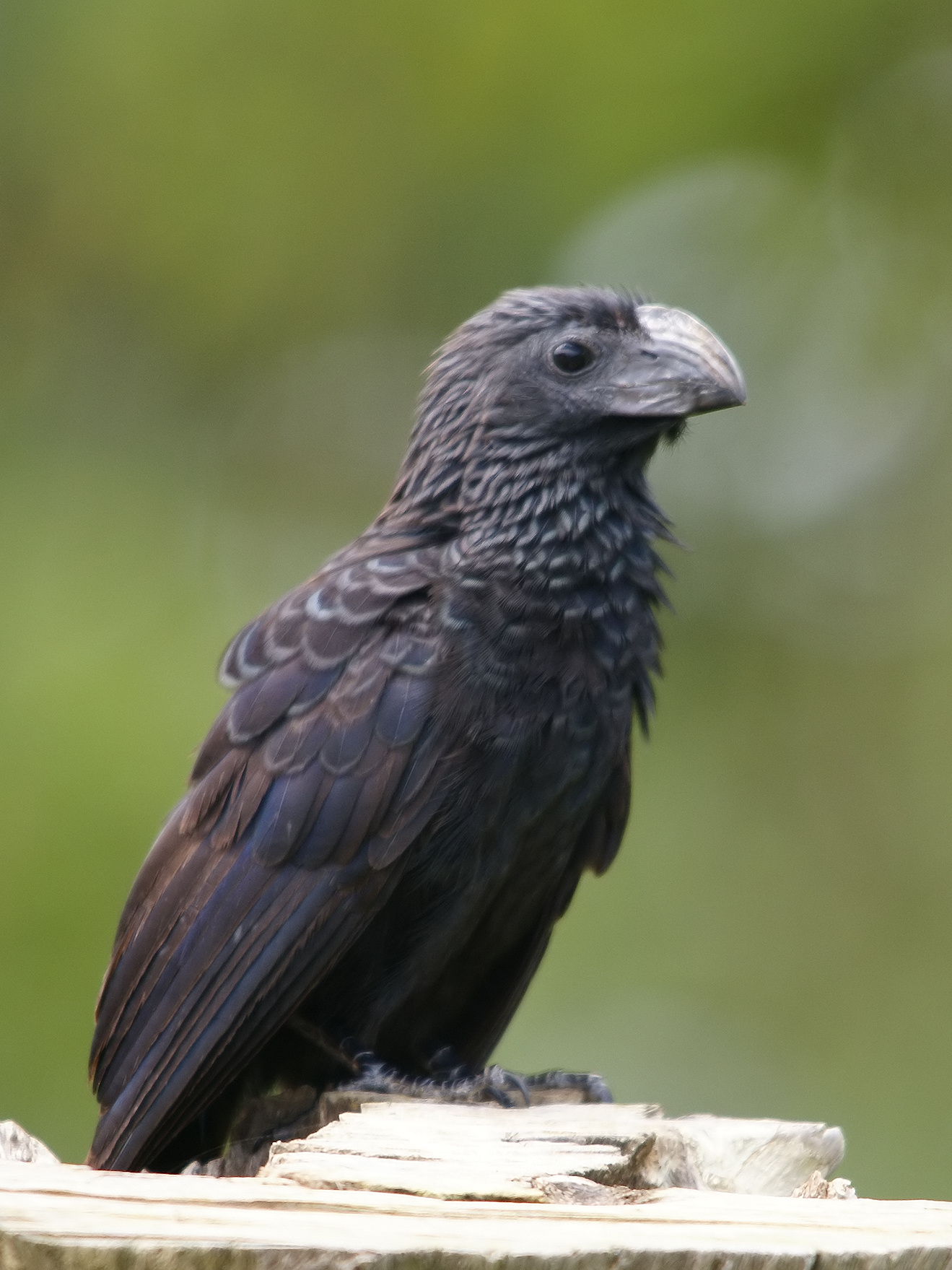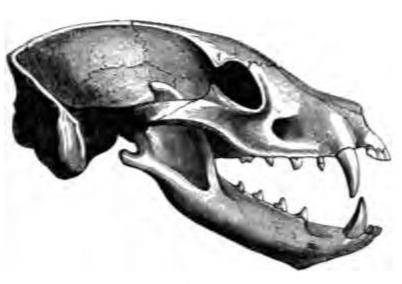|
Calcar
The calcar, also known as the calcaneum, is the name given to a spur of cartilage arising from inner side of ankle and running along part of outer interfemoral membrane in bats, as well as to a similar spur on the legs of some arthropods. The calcar serves to help spread the interfemoral membrane, which is part of the wing membrane between the tail and the hind legs. Calcar (femorale) also refers to the dense, vertically oriented bone present in the Anatomical terms of location#Other terms, posteromedial region of the body of femur, femoral shaft Anatomical terms of location#superior and inferior, inferior to the Body of femur#lateral border and medial border, lesser trochanter. Usage history It is unclear who first coined the word "calcar" to apply to bat anatomy; records of its usage date to Joel Asaph Allen in 1893. The word calcar is derived from Latin "wiktionary:calx#Etymology 2, calx," meaning "heel". Other terms or phrases that refer to the same feature include "suppleme ... [...More Info...] [...Related Items...] OR: [Wikipedia] [Google] [Baidu] |
Megabat
Megabats constitute the Family (biology), family Pteropodidae of the Order (biology), order Chiroptera. They are also called fruit bats, Old World fruit bats, or—especially the genus, genera ''Acerodon'' and ''Pteropus''—Pteropus, flying foxes. They are the only member of the Superfamily (taxonomy), superfamily Pteropodoidea, which is one of two superfamilies in the suborder Yinpterochiroptera. Internal divisions of Pteropodidae have varied since Subfamily, subfamilies were first proposed in 1917. From three subfamilies in the 1917 classification, six are now recognized, along with various Tribe (biology), tribes. As of 2018, 197 species of megabat had been described. The leading theory of the evolution of megabats has been determined primarily by genetic data, as the fossil record for this family is the most fragmented of all bats. They likely evolved in Australasia, with the common ancestor of all living pteropodids existing approximately 31 million years ago. Man ... [...More Info...] [...Related Items...] OR: [Wikipedia] [Google] [Baidu] |
Diaemus
The white-winged vampire bat (''Diaemus youngi''), a species of vampire bat, is the only member of the genus ''Diaemus''. They are found from Mexico to northern Argentina and are present on the islands of Trinidad and Margarita Island. Etymology and taxonomy The white-winged vampire bat was described by Dutch zoologist Fredericus Anna Jentink in 1893. Dr. Charles Grove Young (1849–1934) is the eponym for the species name ''youngi''.Beolens, B., Watkins, M., & Grayson, M. (2009). ''The eponym dictionary of mammals''. JHU Press. Jentink decided to honor Young with the species name because " our Museum is indebted o himfor so many additions to its collections of the British Guyana animals." When it was described by Jentink in 1893, it was initially placed in the same genus as the common vampire bat, ''Desmodus''. However, in 1907, Gerrit Smith Miller Jr. placed it in a new genus, ''Diaemus''. That move to a new genus was not immediately accepted, however, with authors continuin ... [...More Info...] [...Related Items...] OR: [Wikipedia] [Google] [Baidu] |
Kitti's Hog-nosed Bat
Kitti's hog-nosed bat (''Craseonycteris thonglongyai''), also known as the bumblebee bat, is a near-threatened species of bat and the only extant member of the family Craseonycteridae. It occurs in western Thailand and southeast Myanmar, where it occupies limestone caves along rivers. Kitti's hog-nosed bat is the smallest species of bat and arguably the world's Smallest organisms#Mammals, smallest mammal by body length (the Etruscan shrew is regarded as the smallest by body mass). It has a reddish-brown or grey coat, with a distinctive pig-like snout. Colonies range greatly in size, with an average of 100 individuals per cave. The bat feeds during short activity periods in the evening and dawn, foraging around nearby forest areas for insects. Females give birth annually to a single offspring. Although the bat's status in Myanmar is not well known, the Thai population is restricted to a single province and may be at risk of extinction. Its potential threats are primarily Anthropog ... [...More Info...] [...Related Items...] OR: [Wikipedia] [Google] [Baidu] |
Bat Calcar
Bats are flying mammals of the order Chiroptera (). With their forelimbs adapted as wings, they are the only mammals capable of true and sustained flight. Bats are more agile in flight than most birds, flying with their very long spread-out digits covered with a thin membrane or patagium. The smallest bat, and arguably the smallest extant mammal, is Kitti's hog-nosed bat, which is in length, across the wings and in mass. The largest bats are the flying foxes, with the giant golden-crowned flying fox (''Acerodon jubatus'') reaching a weight of and having a wingspan of . The second largest order of mammals after rodents, bats comprise about 20% of all classified mammal species worldwide, with over 1,400 species. These were traditionally divided into two suborders: the largely fruit-eating megabats, and the echolocating microbats. But more recent evidence has supported dividing the order into Yinpterochiroptera and Yangochiroptera, with megabats as members of the former al ... [...More Info...] [...Related Items...] OR: [Wikipedia] [Google] [Baidu] |
Trachops
The fringe-lipped bat (''Trachops cirrhosus'') is a leaf-nosed bat from southern Mexico to Bolivia and southern Brazil. It has three subspecies and no known fossils. It is the only species within its genus. Morphology The fringe-lipped bat has wart-like bumps on its lips and muzzle, which give it its name. The bat has an overall color of a reddish brown with gray on its belly. The fur is long and woolly. It is medium in size, about 32 grams.Garog, A. 1999.''Trachops cirrhosus'' (On-line), Animal Diversity Web. accessed December 4, 2008 a The tail is short. It has a nose-leaf with serrated edges. It has two pairs of lower incisors with three pairs of lower premolars. The molars have tubercular depressions with w-shaped cusps. The rostrum is shorter than the braincase but equal to the width of the braincase. It has a low wing-aspect ratio and high wing loading.Cramer, M.J., Willig, M.R., & Jones, C. 2001.''Trachops cirrhosus''. Mammalian Species.656:1-6. Reproduction and dev ... [...More Info...] [...Related Items...] OR: [Wikipedia] [Google] [Baidu] |
Molossus (bat)
''Molossus'' is a genus of Chiroptera, bats. The genus contains ten species with a New World distribution from Mexico in the north to northern Argentina at its most southerly limit. Four of these species have distributions that include various islands in the West Indies such as Puerto Rico or Trinidad. The genus belongs to a group commonly referred to as free-tailed bats. Its name is from the ancient Molossus (dog), Molossus breed of shepherd dog.''The Mammals of the Southern African Sub-region'' by J. D. Skinner, , 2006, p. 277, "The name of the [free-tailed bats] family is derived from the Greek ''molossus'', a kind of dog used by Greek shepherds in ancient times." __TOC__ Systematics The following species are recognised: * ''Molossus alvarezi'' * ''Molossus aztecus'' Saussure, 1860 * ''Bonda mastiff bat, Molossus bondae'' * ''Molossus coibensis'' Allen, 1904 * ''Molossus currentium'' Thomas, 1901 * ''Molossus molossus'' (Pallas, 1766) * ''Molossus pretiosus'' Miller, 1902 * '' ... [...More Info...] [...Related Items...] OR: [Wikipedia] [Google] [Baidu] |
Pteronotus
''Pteronotus'' is a genus of bats. Eight extant species have been recognized, as well as one relatively recently extinct species. References * Gutierrez, E.E. & Molinari, J. 2008. Morphometrics and taxonomy of bats of the genus ''Pteronotus'' (subgenus ''Phyllodia'') in Venezuela. Journal of Mammalogy 89(2): 292–305. Pteronotus, Bat genera Taxa named by John Edward Gray {{bat-stub ... [...More Info...] [...Related Items...] OR: [Wikipedia] [Google] [Baidu] |
Saccopteryx
''Saccopteryx'' is a genus of sac-winged bats from Central and South America. The species within this genus are: * Antioquian sac-winged bat ''Saccopteryx antioquensis'' *Greater sac-winged bat The greater sac-winged bat (''Saccopteryx bilineata'') is a bat of the family Emballonuridae native to Central and South America. They are the most common bats seen in the rainforest, as they often roost on the outside of large trees. They are ... ''Saccopteryx bilineata'' * Frosted sac-winged bat ''Saccopteryx canescens'' * Amazonian sac-winged bat ''Saccopteryx gymnura'' * Lesser sac-winged bat ''Saccopteryx leptura'' References Bat genera Taxa named by Johann Karl Wilhelm Illiger {{Emballonuridae-stub ... [...More Info...] [...Related Items...] OR: [Wikipedia] [Google] [Baidu] |
Phyllostomus
''Phyllostomus'' is a genus of leaf-nosed bat. It contains four described species. Species Genus ''Phyllostomus'' - spear-nosed bats * Pale spear-nosed bat, ''Phyllostomus discolor'' * Lesser spear-nosed bat, ''Phyllostomus elongatus'' *Greater spear-nosed bat The greater spear-nosed bat (''Phyllostomus hastatus'') is a bat species of the family Phyllostomidae from South and Central America. It is one of the larger bats of this region and is omnivorous. Habitat ''Phyllostomus hastatus'' lives in t ..., ''Phyllostomus hastatus'' * Guianan spear-nosed bat, ''Phyllostomus latifolius'' References Phyllostomidae Bat genera Taxa named by Bernard Germain de Lacépède {{Leafnosed-bat-stub ... [...More Info...] [...Related Items...] OR: [Wikipedia] [Google] [Baidu] |
Vampyrum
The spectral bat (''Vampyrum spectrum''), also called the great false vampire bat, great spectral bat, American false vampire bat or Linnaeus's false vampire bat, is a large, carnivorous leaf-nosed bat found in Mexico, Central America, and South America. It is the only member of the genus ''Vampyrum''; its closest living relative is the big-eared woolly bat. It is the largest bat species in the New World, as well as the largest carnivorous bat: its wingspan is . It has a robust skull and teeth, with which it delivers a powerful bite to kill its prey. Birds are frequent prey items, though it may also consume rodents, insects, and other bats. Unlike the majority of bat species, it is monogamous. Colonies consist of an adult male and female and their offspring. The adult male will bring food back to the roost to provision the adult female and their offspring. Colonies generally roost in tree hollows, though individuals may roost in caves. Due to habitat destruction and its low popu ... [...More Info...] [...Related Items...] OR: [Wikipedia] [Google] [Baidu] |
Insectivore
file:Common brown robberfly with prey.jpg, A Asilidae, robber fly eating a hoverfly An insectivore is a carnivore, carnivorous animal or plant which eats insects. An alternative term is entomophage, which can also refer to the Entomophagy in humans, human practice of eating insects. The first vertebrate insectivores were amphibians. When they evolved 400 million years ago, the first amphibians were piscivores, with numerous sharp conical teeth, much like a modern crocodile. The same tooth arrangement is however also suited for eating animals with exoskeletons, thus the ability to eat insects can stem from piscivory. At one time, insectivorous mammals were scientific classification, scientifically classified in an order (biology), order called Insectivora. This order is now abandoned, as not all insectivorous mammals are closely related. Most of the Insectivora taxa have been reclassified; those that have not yet been reclassified and found to be truly related to each ... [...More Info...] [...Related Items...] OR: [Wikipedia] [Google] [Baidu] |
Hairy-legged Vampire Bat
The hairy-legged vampire bat (''Diphylla ecaudata'') is one of three extant species of vampire bats. It mainly feeds on the blood of wild birds, but can also feed both on domestic birds and humans. This vampire bat lives mainly in tropical and subtropical forestlands of South America, Central America, and southern Mexico. It is the sole member of the genus ''Diphylla''. Taxonomy and etymology It was described by German biologist Johann Baptist von Spix in 1823. Spix first encountered the species in Brazil. Spix coined the genus name ''Diphylla'' () and the species name ''ecaudata'' (). The two recognized subspecies are: *''Diphylla ecaudata centralis'' is found from western Panama to Mexico. A single specimen was taken in an abandoned railroad tunnel near Comstock, Val Verde County, Texas, in 1967, well outside the taxon's recognized range. *''Diphylla ecaudata ecaudata'' is found from Brazil and eastern Peru to eastern Panama. Description It is similar in appearance to the ... [...More Info...] [...Related Items...] OR: [Wikipedia] [Google] [Baidu] |





